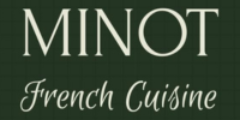A Historical Overview of French Cuisine
French cuisine has a storied history that dates back to the Middle Ages, characterized by its intricate techniques and sophisticated flavors. The culinary journey begins in the medieval courts, where the royals and aristocrats of France shaped early dining customs. Lavish banquets featuring elaborate dishes were a staple, reflecting the wealth and power of the ruling elite.
François Pierre La Varenne, often considered the father of modern French cuisine, made significant contributions during the 17th century. His seminal work, “Le Cuisinier françois,” introduced unprecedented techniques and refined recipes that laid the groundwork for what we recognize as French haute cuisine. Similarly, the renowned chef Marie-Antoine Carême furthered this evolution in the 19th century. Carême’s focus on grand cuisine, involving detailed presentations and rich flavors, cemented his legacy and influenced countless chefs globally.
The French Revolution was a turning point, drastically altering dining habits. With the dissolution of the aristocracy, professional chefs found themselves catering to the bourgeoisie. This democratization of food culture gave rise to restaurants and public dining, making French cuisine accessible to a broader audience.
The diversity of French cuisine is also attributed to its varied regional influences. Each region boasts unique ingredients and traditional dishes. From the butter-rich sauces of Normandy to the olive oil and herbs of Provence, the regional diversity adds immense richness to French gastronomy.
In the 20th century, post-war modernization and globalization brought new flavors and techniques into French kitchens. Innovations such as nouvelle cuisine emerged, emphasizing simplicity and fresh ingredients over the heavy sauces of the past. Furthermore, global interactions introduced elements like Asian spices and American convenience foods, leading to a more eclectic culinary landscape.
In essence, French cuisine is a dynamic and evolving art form, influenced by historical events, socio-economic changes, and regional diversity. The contributions of pioneering chefs and the effects of globalization have continually shaped this culinary tradition, making it an enduring symbol of cultural heritage.
Signature Dishes and Culinary Techniques
French cuisine is renowned for its complexity and elegance, underscored by both its iconic dishes and foundational techniques. At the heart of French cooking are the ‘mother sauces’—Béchamel, Velouté, Espagnole, Hollandaise, and Tomate. These sauces form the base for innumerable more elaborate sauces, embodying the artistry and precision of French culinary traditions. Béchamel, a smooth white sauce made from milk, flour, and butter, is used in many gratins and creamy dishes. Velouté, similar to Béchamel, employs a light stock instead of milk, resulting in a versatile and refined white sauce. Espagnole, a rich brown sauce made from roasted bones, mirepoix, and tomatoes, forms the basis for many robust meat dishes. Hollandaise, an emulsion of egg yolks, lemon juice, and butter, is famously served over eggs Benedict. Lastly, Tomate sauce, crafted from tomatoes and aromatic ingredients, features prominently in a variety of dishes.
Signature French dishes amplify these sauces’ roles, showcasing regional diversity and culinary heritage. Coq au Vin epitomizes rustic comfort with chicken braised in red wine, mushrooms, lardons, and pearl onions. Bouillabaisse, a traditional Provençal fish stew, blends fresh Mediterranean seafood, saffron, and a fragrant broth. Duck à l’Orange is a classic marriage of succulent duck and a sweet-tangy orange sauce. Ratatouille, a vibrant vegetable medley from Provence, highlights the art of stewing seasonal produce. For dessert, the caramelized splendor of Crème Brûlée offers a luxurious contrast of creamy custard and brittle sugar crust.
Beyond these tantalizing dishes, French culinary techniques are pivotal to achieving excellence. Sautéeing, cooking food quickly in a small amount of fat, accentuates texture and depth of flavor. Flambéing involves igniting alcohol to burn off its raw edge and concentrate flavors, lending a dramatic touch to dishes. The sous-vide method, cooking vacuum-sealed food in a water bath at precise temperatures, ensures unparalleled tenderness and even cooking.
The essence of French cuisine also lies in its dedication to fresh, high-quality ingredients and the principle of ‘terroir’—the notion that the origin of ingredients intimately influences their flavor. This respect for ingredients’ provenance and quality is paramount, ensuring that each dish tells a story of both refinement and connection to the land.
